12 Upper Extremity & Ballistic Skills
Upper Extremity &
Ballistic Skills
“Just play. Have fun. Enjoy the game.”
-Michael Jordan

Reaching and Grasping
The simplest definition of prehension is the ability to grasp an object. However, the act of prehension is a fairly complex task that should be broken down into several components. Consider the task of pouring a glass of milk from a gallon container. Prehension begins with regard, or the visual attention paid to the container. Reach is the movement of the upper
extremity toward the milk. It incorporates directing and grading the arm position to the location of the container, as well as pre-shaping the hand to match the size and shape of the handle. Grasp involves the act of closing and stabilizing the hand on the handle, whereas manipulation is the movement of the container. Release occurs after the milk container has been placed down and the grip relaxes to let go. If the container is too difficult manipulate with one hand, two hands can be used. This would require bimanual coordination.
One inherent feature of prehension is postural control. Before reaching, anticipatory posture control accounts for activation of the stabilizing muscles in anticipation of a reaching motion. This allows for an adjustment of one’s center of gravity so that reaching can be done efficiently, without any unnecessary movements. Reactive postural control occurs after
the actual act of reaching and accounts for maintaining one’s stability while holding the container of milk (Hadders-Algra, 2013).
In addition to postural control principles, biomechanics, such as the length-tension relationship and the known functional hand/wrist position affects the grasp. The functional position is when the wrist is in 20-30 degrees of extension, the thumb is in 45 degrees of abduction, and there is flexion of the finger joints (Figure 12.1).

Figure 12.1 Functional Hand Position
The visual system plays an important role in reaching and grasping. Reach and grasp are associated with two visuomotor channels activated in parallel (Jeannerod, 1984). One channel pertains to an object’s extrinsic properties, such as location, and activates the proximal shoulder musculature used for the reach. The second channel provides information about the object such as its contour, which informs pre-shaping of the hand for grip formation.
There are several different types of grips, all of which are largely dependent on the shape and size of the object and its intended use. During infancy and childhood power grips emerge before precision grips. With power grips, the object is held against the palm by the fingers and/or thumb. Examples of power grips are: 1) spherical, 2) hook ,and 3) cylindric. A spherical grip is used to hold a baseball, whereas a cylindric grip is used to hold a can. Grabbing the handle of suitcase requires a hook-type grip.
Precision grips include: 1) tip-to-tip, 2) pad-to-pad, and 3) lateral. With these types of grips, the object does not come in contact with the palm. Rather, the object is held between the thumb and fingers. A tip-to-tip grip is used to hold a needle, whereas a pad-to-pad grip is useful for picking up and holding a coin. A lateral grip is used when placing a key in a lock.
Body scaling is the term used to describe the phenomenon in which the reaching movement patterns and grip formation are influenced by the ratio between the size of the individual doing the reaching and grasping and the dimensions of the object (Hohlstein, 1982; Newell, Scully, Tenenbaum, & Hardiman, 1989). Both children and adults demonstrate that the ratio of hand size to object is consistent for determining whether an object should be picked up with one or two hands.
Infancy and Childhood
Very young infants demonstrate pre-reaching behavior, which is a gross upper extremity movement toward on object. Objects that move, glow or make sounds can facilitate pre-reaching. At approximately four months of age, infants appear to be able to use vision to help guide their reaching with a bit more accuracy. Regardless of the presentation and the
object reaching is done bilaterally. At about seven months, many infants begin to adjust their reaching based on the size of the object and may reach with either one or two hands (Hadders-Algra, 2013). At about the same time, voluntary release of an object is emerging. Many infants will repeatedly drop a toy or spoon to practice this newly developed skill and
because it will generate a response from family members or caregivers.
After eight months, infants will begin to dissociate simultaneous arm activity so they can manipulate an object cooperatively with both hands. Then, they can hold two objects, one in one hand, and one in the other, often banging them together. By tenmonths, the hands can perform two different functions so that infants can hold a bottle or cup with one hand while at the same time reach for an interesting toy. At about 12 months of age, infants are able to isolate the index finger and use it as a primary pointer. At about the same time they are also
able to insert objects and pull them apart. This requires stability in one hand and activity of the other.
By the end of the second year, the ability to perform complex bimanual tasks improves dramatically. The process of reaching, grasping and manual manipulation that occurs of the first two years, relies on the gradual development of the ability to use anticipatory control along with accurate generation of fingertip forces. After two years of age, integration of these
processes are refined, which allow for smoother, and more efficient prehension as well as the development of in-hand manipulation.

Figure 12.2 Toddler Playing with Two Hands
During the school age period, children will often demonstrate mastery of many of the components of prehension. By the age of six, most children will demonstrate adequate in-hand manipulation, which allows for advancement of fine-motor activities. At about this time, demands for writing will be placed on children and so the emergence of different pencil
grips will emerge. Efficient grips are those in which the thumb and index finger form a circle or open web space, which allows for skillful manipulation. Inefficient grips limit the range, speed, and fluidity of distal movements and require greater movements of the wrist and elbow (Dinehart, 2015).

Figure 12.3 Child Writing
Adolescence
During adolescence, the fine motor demands resemble those of school-aged children, except that the required skill level is frequently higher. Fortunately at the same time, adolescents are demonstrating a significant increase in grip and pinch strength in part due to maturation of the neuromuscular system. Skills performed with the dominant hand continue to advance beyond those with the non-dominant hand. Adolescents also become much more aware of their coordination and skill with manipulative skills which can serve to motivate certain activities and drive practice. Practice and success in manipulative tasks are highly correlated.
Adults and Older Adults
Reaching, grasping and manipulation are well maintained for activities of daily living as well as those tasks and activities practiced regularly because of employment requirements or one’s hobbies and recreational activities. When interest and practice of certain activities decline however, so does task proficiency. Skill can often be restored with additional
practice. When long standing dysfunction of routine activities does occur, it’s nearly always a result of a pathological condition such as peripheral neuropathy, arthritis or cumulative stress.
Older adults will realize a decline in manual performance and psychomotor behaviors. These changes reflect functional adaptations to changes in the visual, nervous and musculoskeletal systems that are associated with aging. There is a decline in depth perception between the ages of 60 – 75 along with changes in proprioception which can result in the
slowing down of reaching behavior. The decline in muscle strength that occurs with aging in combination with changes in articular cartilage, also reduces the efficiency of joint movement.
Despite these system changes, overall eye-hand coordination and manipulative skills are relatively well maintained in older adults as long as there is task-specific practice.

Figure 12.4 Women Playing the Piano
Catching
Catching is a fairly challenging development task, but one that is often helpful during everyday life, and one that is necessary for many different sports. The goal of catching is to intercept the flight of a flying object, and then be able to manipulate in it in one’s hands. Children initially position their arms and hands rigidly and trap the object, usually a ball, against their chests. Depending on the size of the ball, children may also use their face or head to trap the ball.
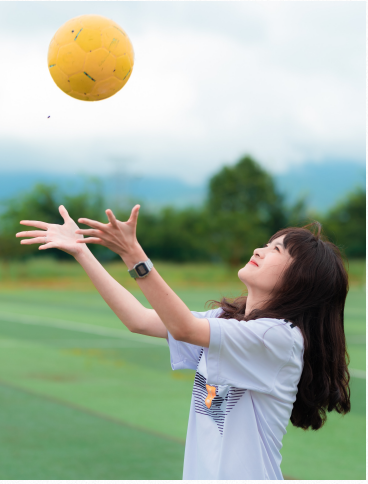
Figure 12.5 Catching a High Ball
In moving from beginner to proficient catching skills, children must be able to 1) move their arms and hands toward the ball, 3) absorb the force of the ball, so that the arms and hands “give” (e.g elbow flexion) when the ball is received, 2) move in all directions to intercept the ball, and 3) position the fingers up when catching a ball to be received above the waist, and position the fingers down when catching a ball to be received below the waist. It should be noted that the components of proficient catching can develop at different rates. This means
that receiving the ball in one’s hands may precede a child’s ability or skill in being able to move toward the ball.
Additionally, it is important to realize that catching can be very specific to environmental and task constraints. The size of the ball relative to the size of the child (e.g. body scaling), the shape and texture of the ball, and the flight pattern and speed can all influence a person’s catching performance.
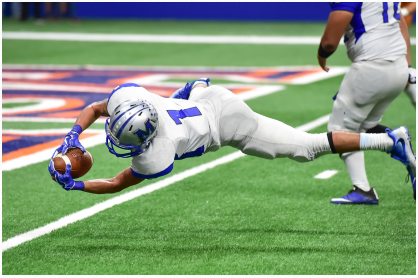
Figure 12.6 Diving to Catch a Football
To catch an object, individuals must be able to calculate the speed and trajectory of the flying object. In addition, it requires the ability to initiate movements well ahead of the actual interception, so that the body and hands can be in the proper position when the ball arrives. This can also be said for striking a tennis ball with a racket or using a hockey stick to manipulate a puck. Persons who seek to interact with a moving object need to be able to anticipate where and when that object will be and then be able to move to that location at the right time. This task is referred to a coincidence-anticipation, in other words, the skills in which one anticipates the completion of a movement to coincide with the arrival of a moving object (Haywood and Getchell, 2014).
Several observations have been documented regarding the development of coincidence anticipation. First, young children’s accuracy decreases as the interception point is further away. In addition it is more difficult for them to catch a ball with a high trajectory because the ball changes location in both horizontal and vertical directions. Young children appear to benefit more from a stark color contrast between the ball and the background than do older children, and similarly are more successful at intercepting large balls compared to small ones. The
speed of the moving object can affect coincidence anticipation, with faster speeds making it generally more difficult. However, sometimes slower speeds can also interfere with accuracy because the children react too early. Either way, it should be noted that children can have difficulty adjusting their responses when the speed of the object varies a lot from one throw to the next. This, however, can also be observed in major league baseball when a batter is fooled by a pitcher’s change-up pitch.
Little research based information is available about catching in older adulthood, but it is evident that older adults are somewhat less accurate and more variable in their performance than younger performers especially when the object is moving fast and the older adults are sedentary (Haywood, 1980). It is suspected that declines observed in visual, nervous, and musculoskeletal systems contribute to this observation. Nevertheless practice and overall fitness appear to be helpful in maintaining coincidence-anticipation and catching throughout adulthood.
Ballistic Skills
Ballistic skills are those in which an individual applies a force to an object with the goal of projecting it. They include throwing, striking and kicking.
Throwing
Throwing can can done in a variety of ways. Young children will typically start out by performing two hand under-hand and one-hand under-hand throws. Whether a throw is performed using one or two hands largely depends on the size of the ball and the size of the child. There is also a sidearm and two hand over-head throw. The type of throw that has received the most attention from a development and skill acquisition viewpoint is the one-hand , over-head throw (Angell, et al, 2018).

Figure 12. 7 Two Hand Over-Head Throw
Young children’s throwing patterns tend to be restricted to arm action alone with no trunk rotation and no forward step. To assess proficiency, different elements of the overhead throw should be assessed. Haywood and Getchell (2014) have identified the elements as 1) trunk action, 2) backswing, 3) arm action, and 4) foot action.
Trunk Action. To realize improvements in the skill of overhead throwing children must demonstrate an evolution of trunk action from forward backward movement to block rotation in which the pelvis and upper trunk move together. This action is refined so that differentiated rotation is observed. This means that the pelvis will rotate forward first followed by rotation of the upper trunk.
Upper Extremity Backswing. Beginner throwers will either have no backswing at all, and throw by moving the elbow from flexion to extension, or will bring the shoulder directly up and back over the head. Proficient throwers will however, bring the throwing arm back and down in a circular nature. This allows for a buildup of momentum and trunk rotation.
Arm Action. The backswing allows for segmental movement of the upper extremity. The humerus will form a right angle with the trunk and comes forward just as (or slight after the shoulder rotate to a front facing position. The forearm lags behind until the upper trunk and shoulders actually rotate in the direction of the thrown. The arm follows through across the front of the body.
Foot Action. Beginner throwers will not take a step at the time of the throw, or they might take a step with the ipsilateral leg. In order to allow for segmental trunk rotation, the more advanced thrower will weight shift back on the ipsilateral leg as the upper extremity moving back and then step forward with the contralateral leg. A first, throwers
will take a short step. With proficiency, throwers will take a long contralateral step over have the distance of their height.

Figure 12.8 Video of Child Throwing Stones
Throwing for Distance and Accuracy
The developmental sequence for over-head throwing is based on throwing for distance. In a study of children and young adult throwers, Langendorfer (1990) found that throwers used lower development levels when throwing for accuracy as compared to when they threw for distance. When however, the distance of the target was far enough away that is required a lot of force, there was not a remarkable difference in the throwing form within individuals. What has also been noted it that the person-task interaction can strongly influence the movement pattern. For example, a strong individual, throwing a short distance, may not need to take a contralateral step. A weaker person, on the other hand might need to a step to reach that same distance.
Childhood and Adolescence
During childhood and even through adolescence there are changes that can occur at each body component of over-head throwing. However, not all components advance at the same rate, nor do the components follow a strict sequence of development. This results in children of the same age, throwing very differently because they are moving toward proficiency following very different sequences. Observations of young adult throwers suggest that not everyone reaches the highest level of each component. This may be due to inadequate
instruction, minimal opportunities to practice or a combination of the two conditions.
Adulthood and Older Adults
The results of a couple of studies of older adult and throwing show a slowed speed of movement and decreased range of motion of the shoulder, and trunk and hip, resulting in slow ball velocity and limited throwing distances. (Haywood, Williams, & VanSant, 1991; Williams, Haywood, & VanSant, 1998). Nevertheless, the coordination of components remained fairly constant. Two consistent observations were made of older adult throwers. The first is that they took a short ipsilateral step and the second is that they used a backswing movement
pattern of the upper extremity that was different than observed in younger people. Rather than continue the backswing with a circular movement, they tended to bend the elbow to bring the ball up behind the head. A decline in the musculoskeletal system is likely to contribute to these observed differences.
Kicking
Kicking is considered to be a ballistic skill because the result is that an object is propelled. Unlike throwing, however, kickers strike an object and use their foot to do so. Kicking requires adequate perceptual abilities, postural control and eye-foot coordination in order to be able to contact the ball with one’s foot.
Proficient kicking begins with a preparatory windup. The kicker achieves this position, by leaping or running up to the ball. As a natural consequence of the running stride, the trunk is rotated back, and the knee of the kicking leg is flexed just after push-off of the rear leg. The thigh of the kicking leg then rotates forward and the knee straightens just before contact with the ball. Other features of a proficient kicking pattern include a reciprocal arm swing and forward trunk rotation.

Figure 12.9 U.S. Carli Lloyd Demonstrating Proficient Kicking
Kicking should initially be attempted with a stationary ball. This will minimize the effect of perceptual processes need for eye-foot coordination. Progression in training should proceed to running up to a stationary ball, so that weight shifting, arm swing, trunk rotation can be initiated prior to the kick and the demand of coincidence-anticipation is minimal. Eventually the kicker will progress to sticking a moving ball.
Similar to throwing, young kickers tend to use a single action rather than a sequence of action. Initially, young children may run through a ball, there by making contact with the foot. But the strike is not executed in any isolated or deliberate way. The child will then progress to pushing the swing forward to strike the ball, but range of motion will be limited and the child won’t step forward with the non-kicking leg. There will be no trunk rotation and the arms will be held stationary at the sides.
Unlike throwing, the qualitative changes that each body part makes toward proficiency are not well documented. it does appear however, that similar to throwing, not all people will develop proficient kicking skills. When asked to kick for different distances, researchers have observed that children will change their movement pattern of kicking as a function of distance (Mally, Battista, & Roberton, 2011). This suggests that the ability to generate force may be a key component for the development of kicking.
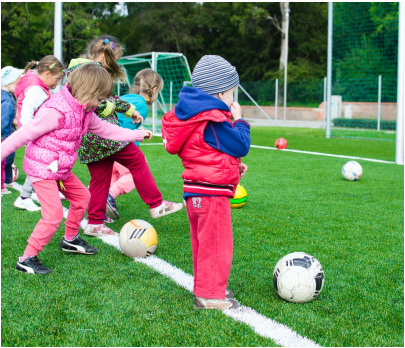
Figure 12.10 Children Kicking a Stationary Ball
Striking
In the case of the ballistic movement pattern of throwing, object propulsion is done without a striking action. With kicking, however, striking an object with one’s foot, is part of the ballistic movement pattern. Striking can also with the hands as seen in volleyball, and the head, as seen in soccer. In addition, striking can also be performed using an implement. Examples are hitting a softball with a bat, striking a puck with a hockey stick, hitting a golf ball with a club, and serving a tennis ball with a racket.
Sidearm Striking
Sidearm striking is a form of striking where the arm remains at or below shoulder level, such as swinging at a baseball with a bat. Striking a moving object is very challenging, so when side striking is first introduced, it is best to have the child or individual attempt to strike a stationary ball. In early sidearm striking, the striker will most often face the ball or object rather than stand sideways to it. The movement pattern includes simple chopping motion via elbow extension with very little movement of the legs, trunk and shoulder.
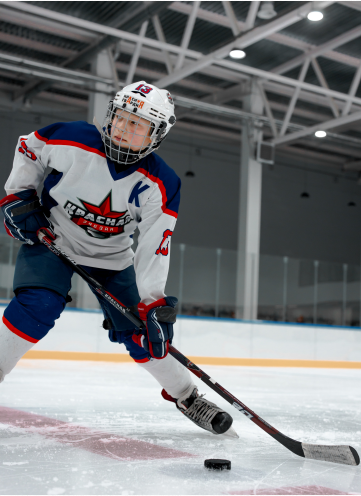
Figure 12.11 Striking a Hockey Puck
Although researchers have not validated a complete developmental sequence for sidearm striking, observations of proficient strikers suggest that the sequences for foot and trunk action in the over-head throw can be applied. Proficient strikers will stand sideways to the path of the incoming ball and will transfer weight to the back foot, stepping forward and transferring weight to the contralateral foot at contact. The sideways position and step allows for trunk rotation.

Figure 12.12 Baseball Player Ready for Sidearm Striking
Similar to overhead-throwing, individuals will use blocked rotation before advancing to differentiated rotation in which pelvis move forward slightly ahead of the upper trunk.
When a racket is used for side striking, there are changes that occur in the upper extremity. Progression from the chopping action leads to an arm swing that is held close to the body, with the racket swinging in front of the trunk. Eventually, the swing arm moves through a full range of motion, with the racket lagging behind the trunk. There is also an evolution of the grip from a power-type cylindric grip to more of a “shake-hands” grip. Attention should be paid to issues of body-scaling because if the racket is too big for the striker, he or she will not
be able to progress to the more refined grip.
Overhead Striking
Overhead striking is another skill that can be done with or without an implement. In the beginning, overhead strikers will look similar to novice overhead throwers. Beginner strikers will stand facing the direction of desired propulsion and demonstrate limited pelvic rotation. They will swing with little upper extremity involvement, except at the elbow Angell, et al 2018).
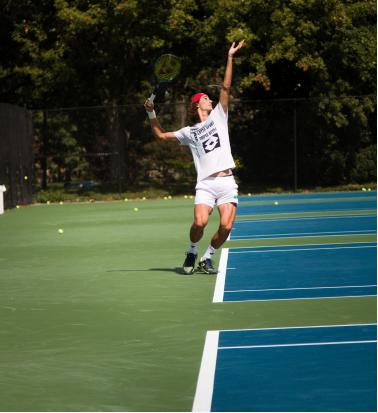
Figure 12.13 Tennis Player Prepares for Overhead Striking
Proficient overhead striking includes an initial stance that is sideways to the direction of propulsion. This position allows for pelvic and trunk rotation. The upper extremity demonstrates full range of motion of the shoulder. This is coordinated with a chain of sequential movements in which the humerus lags behind the trunk rotation, the forearm lags behind the humerus, and the racket lags behind the forearm during the forward swing.
Research on active older adults performing ballistic skills is limited. Nevertheless, there has been some research in the context of golf and tennis. Jagacinski, Greenberg, & Liao (1997) compared the performance of golfers between the ages of 19-25 with golfers 60-69 years of age. Older adults were found to reach peak force early in the swing, whereas younger golfers reached peak force just before impact. A few of the older golfers were less accurate, but in general, most were as accurate as the younger golfers. Haywood and Williams (1995) observed the serve of older tennis players, ages 62-81. The developmental steps of overhead striking were evaluated and nearly all the participants demonstrated moderate-level of trunk, forearm and racket movements. Participants who previously aught tennis were placed in the highest developmental category for each component.
Final Thoughts
Upper extremity tasks and ballistic skills require the integration of visual perception, postural control, strength, flexibility and power. Biomechanics principles, such as segmental trunk rotation, stepping forward to transfer weight and momentum, and contralateral movements of the upper and lower extremities allow for the maximization of force and speed. Nevertheless, transitioning from one skill level of skill to the next is not automatic and not all individuals reach the highest level of proficiency. Task conditions and the interactions between the person and the task are important in determining what movement patterns emerge in performance. For older adults, when the context of a task places high demands on strength and flexibility, performance may decline. However, for most older adults, well-practiced movement patterns can be well maintained over a life span.
References
Angell, R.M., Butterfield, S.A., Tu, Sh., Loovis, E.M., Mason, C.A., Nightingale, C.J. (2018). Children’s throwing and striking: A longitudinal study. Journal of Motor Learning and Development, 6(2), 315-332.
Dinehart, L. H. (2015). Handwriting in early childhood education: Current research and future implications. Journal of Early Childhood Literacy, 15(1), 97–118. https://doi.org/ 10.1177/1468798414522825
Hadders-Algra M. (2013). Typical and atypical development of reaching and postural control in infancy. Developmental Medicine and Child Neurology, 55 Suppl 4, 5–8. https://doi.org/10.1111/dmcn.12298
Haywood, K. M. (1980). Coincidence-anticipation accuracy across the life span. Experimental Aging Research, 6(3), 451- 461.
Haywood, K. M., & Williams, K. (1995). Age, gender, and flexibility differences in tennis serving among experienced older adults. Journal of Aging and Physical Activity, 3, 54-66.
Haywood, K. M., Williams, K., & VanSant, A. (1991). Qualitative assessment of the backswing in older adult throwing. Research Quarterly for Exercise and Sport, 62, 340-343.
Hohlstein, R. E. (1982). The development of prehension in normal infants. American Journal of Occupational Therapy, 36, 170-176.
Jagacinski, R.J., Greenberg, N., & Liao, M. (1997). Tempo, rhythm, and aging in golf. Journal of Motor Behavior, 29(2), 159-173.
Jeannerod, M. (1984). The timing of natural prehension movements. Journal of Motor Behavior, 16(3), 235-254.
Langendorger, S. (1990). Motor-task goal as a constraint on developmental status. In J. E. Clark & J. H. Humphrey (eds.), Advances in motor development research (Vol. 3, pp. 16-280). New York, NY: AMS Press.
Mally, K.K., Battista, R.A., & Roberton, M.A. (2011). Distance as a control parameter for place kicking. Journal of Human Sport and Exercise, 6(1), 122-134.
Newell, K. M., Scully, D.M., Tenenbaum, F., & Hardiman, S. (1989). Task constraints and infant grip configurations. Developmental Psychobiology, 22, 817-832.
Williams, K., Haywood, K., & VanSant, A. (1998). Changes in throwing by older adults: a longitudinal investigation. Research Quarterly for Exercise and Sport, 69(1), 1-10.
Images
Title page. Photo by Tugrul Kurnas from Pexels. Retrieved from https://www.pexels.com/photo/woman-doingshadow-boxing-6805339/
Figure 12.1 Functional Hand Position. Photo by Ellen Zambo Anderson
Figure 12.2 Toddler Playing with Two Hands. Photo by Lucas from Pexels. Retrieved from https://www.pexels.com/search/children%20playing/
Figure 12.3 Child Writing. Photo by Katerina Holmes from Pexels. Retrieved from https://www.pexels.com/search/children%20writing/
Figure 12.4 Women Playing the Piano. Photo by Center for Better Aging from Pexels. Retrieved from https://www.pexels.com/search/old%20personplaying%20piano/
Figure 12.5 Catching a High Ball. Photo by THIS IS ZUN from Pexels. Retrieved from https://www.pexels.com/search/children%20catching%20a%20ball/
Figure 12.6 Diving to Catch a Football. Photo by Joe Calomeni from Pexels. Retrieved from https://www.pexels.-com/search/catching%20/
Figure 12.7 Two Hand Over-Head Throw. Photo by WindoNugroho from Pexels. Retrieved from https://www.pexels.-com/search/child%20throwing/
Figure 12.8 Video of Child Throwing Stones. Video by Yan Krukov from Pexels. Retrieved from https://www.pexels.-com/search/videos/child%20throwing/
Figure 12.9 Carli Lloyd Demonstrating Proficient Kicking. Photo by Tony Guitierrez/Associated Press. Retrieved from https://www.latimes.com/sports/soccer/la-sp-olympics-carli-lloyd-20160716-snap-story.html
Figure 12.10 Children Kicking a Stationary Ball. Photo by Lucas from Pexels. Retrieved from https://www.pexels.com/photo/toddler-playing-soccer-296302/
Figure 12.11 Striking a Hockey Puck. Photo by Ron Lach from Pexels. Retrieved from https://www.pexels.com/search/hockey/
Figure 12.12 Baseball Player Ready for Sidearm Striking. Photo by Mandie Inman from Pexels. Retrieved from https://www.pexels.com/photo/person-holding-baseballbat-896567/
Figure 12.13 Tennis Player Prepares for Overhead Striking. Photo by Lucas Bower from Pexels. Retrieved from https://www.pexels.com/photo/man-in-white-shirt-and-shorts-playing-tennis-9649231/

